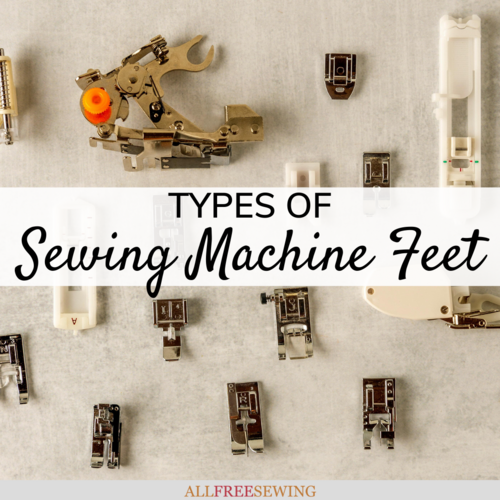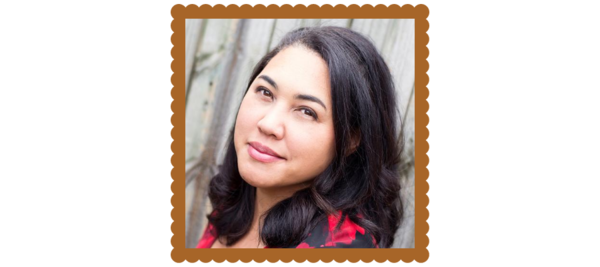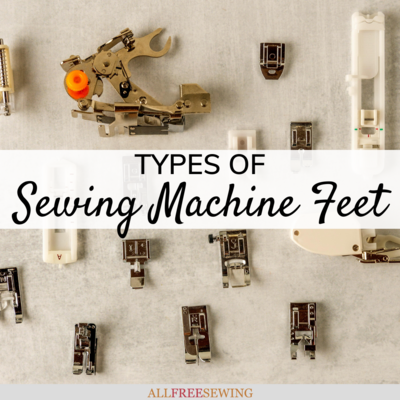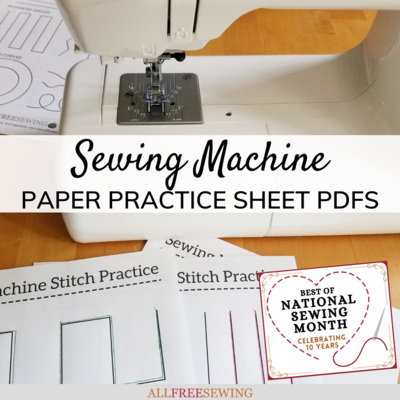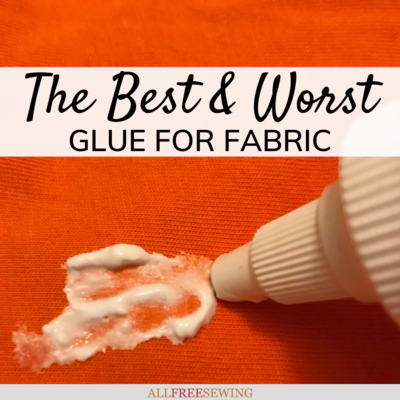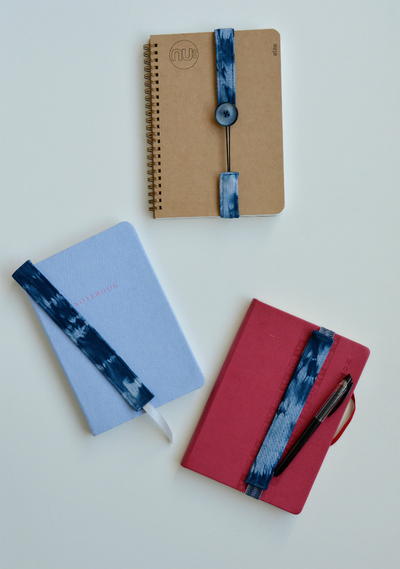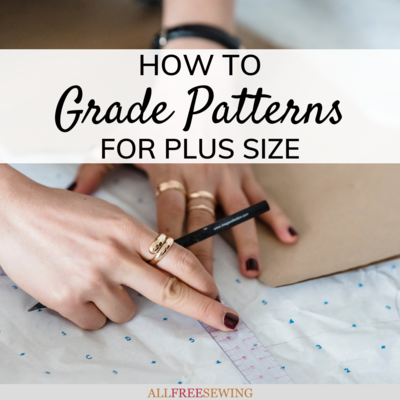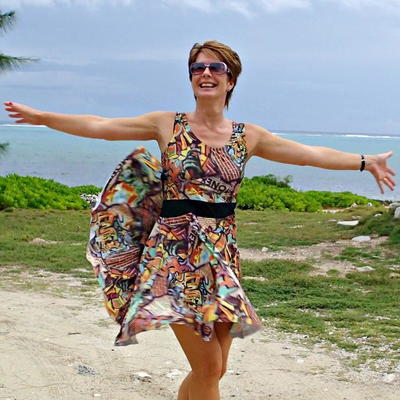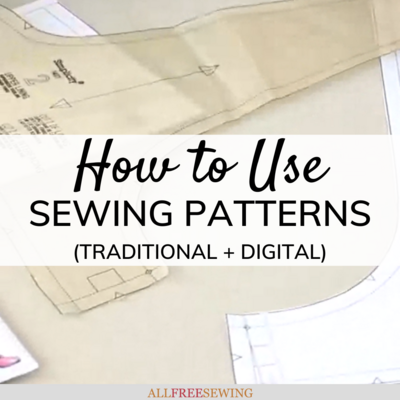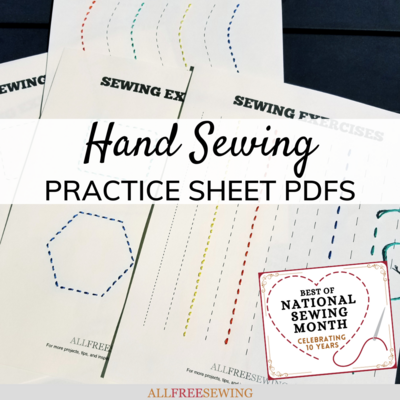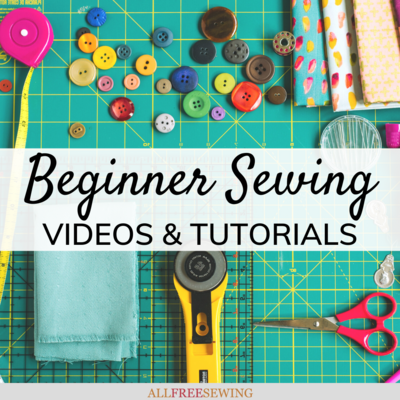Types of Sewing Machine Feet
Let's discuss the different types of sewing machine feet, from the most common to the less used specialty machine feet.
Sewing Machine Feet Guide
The presser foot or sewing machine foot is an attachment used to hold fabric flat as it is fed through the machine while the needle and thread sew the material. It is an integral part of a sewing machine and also one of the most confusing components.
Presser feet allow you to accomplish much more than straight stitching. And, chances are, your machine came with a few "specialty" feet that will allow you to up your sewing skills.
Learning about the different types of sewing machine feet can add ease to your sewing and save you time. From decorative stitching to sewing the perfect rolled hem, presser feet make short work of your sewing tasks.
Here are a few popular types of sewing machines feet you probably have in your sewing box and a couple of extras you main want to consider adding to your tool kit.
Standard All-Purpose Foot
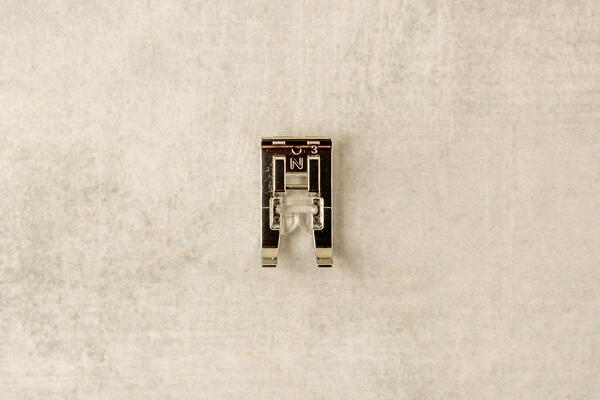
The standard presser foot will vary depending on the machine brand. However, no matter the style, the foot will work for most of your sewing needs. The all-purpose presser foot is the default for most straight and zigzag stitching.
The area where the needle passes can vary in width. Some standard presser feet feature a single hole and are designed just for a straight stitch. Others have a wider space or open toe design that accommodates a variety of stitches.
Zig-Zag Foot
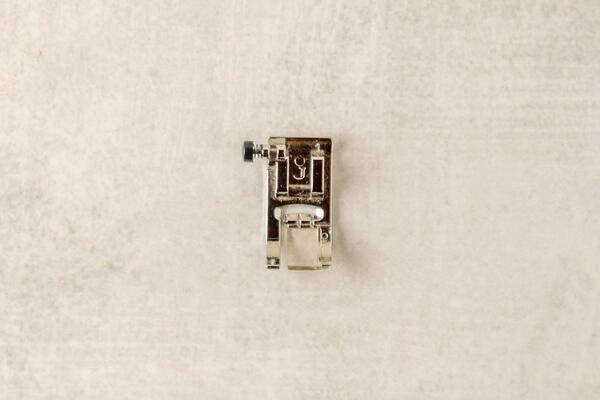
Similar to the all-purpose presser foot, the zig-zag foot is designed to sew a wide range of stitches. The main difference is that zig-zag foot features a guide that allows you to sew perfect 3/16, 1/4, 3/8, and 1/2 inch seam allowances. The zig-zag foot allows for wide, decorative stitching. This foot can also be used as your standard sewing presser foot.
Zipper Foot or Binding Foot
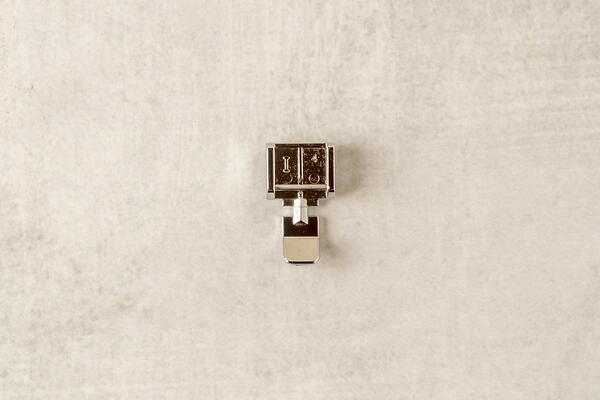
The zipper foot allows you to sew closely to the teeth on zippers. It also features an open space to the right or left of the foot that enables you to move your needle as needed to sew on either side of a zipper. The zipper foot can be used to sew piping very close to the cord inside as well.
Buttonhole Foot
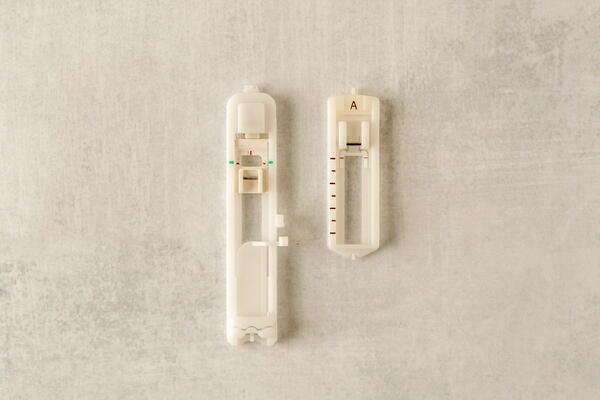
The buttonhole presser foot helps you create beautiful buttonholes. There are two styles of buttonhole presser feet and the one you get in your standard sewing kit varies from brand to brand. Both feet feature a stop bar that causes the machine to cease sewing and reverse sew the opposite side of the buttonhole.
Some buttonhole feet have a spot for you to place a button on the opposite side of the foot, so there is no need to measure the button. Others have lined increments that match common button sizes. However, when it comes to sewing, both types create professional-looking, reinforced buttonholes.
Button Foot
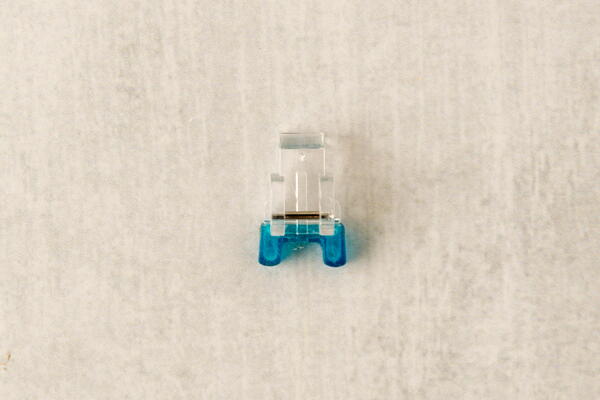
If you are creating fancy buttonholes, why hand sew on the buttons? The button foot helps you to sew buttons easily on your machine. The foot features a horseshoe-shaped rubberized grip that keeps the button from slipping out of place while providing a clear view of the stitching area. You can also use the foot to attach ribbons, tack trims in place, and even sew on the hook and eye closures.
Overcast Foot
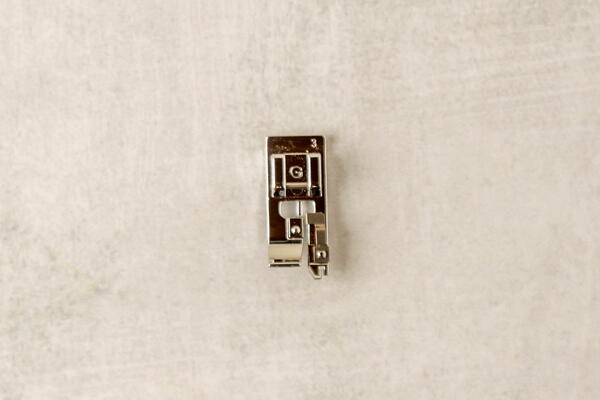
This foot is used to sew an overcast stitch (an interlocking hem along the raw edge of a piece of fabric) or to prevent the fabric from curling under. If gives a piece a fabric a finished edge, similar to a serger. This foot is perfect for finishing seams, appliqué, or even as a decorative element to edges of the fabric.
Blind Hem or Invisible Zipper Foot
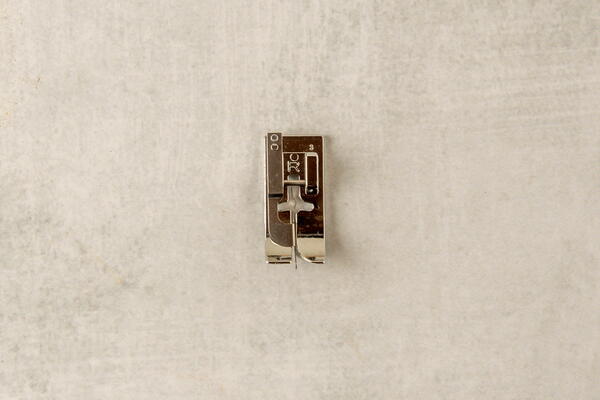
If your machine comes with a blind hem stitch option, chances are you got a blind hem presser foot in your accessories packet. This foot is mostly used for hemming pants. The blind stitch foot will make it easier to sew beautiful hems with minimal visual stitching on the right side of the fabric.
Specialty Presser Feet
Nonstick Glide or Teflon Foot
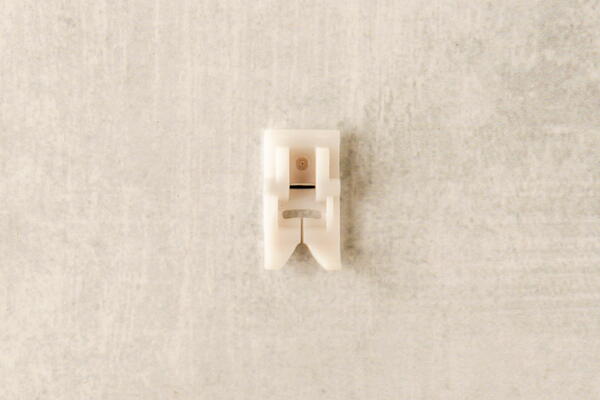
Glide or Teflon presser feet are made to easily slide over leather, pleather, vinyl, or polyethylene fabrics. Regular metal presser feet do not glide smoothly over these types of fabric. Like Teflon coated frying pans, the foot features a non-stick coating that allows you to easily sew leathers and other "sticky" type fabrics with ease.
Quarter Inch Foot
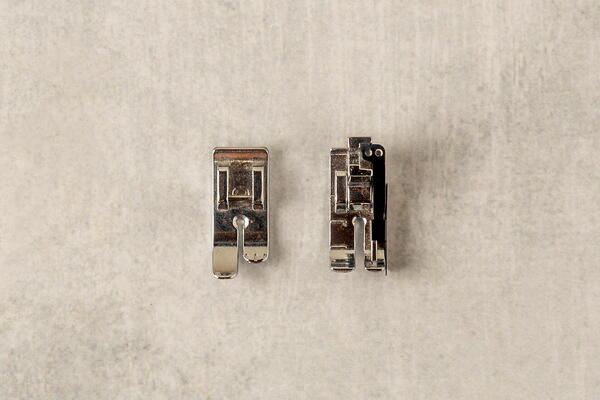
A popular foot with quilters, the quarter-inch foot, or piecing foot allows you to sew a perfect 1/4 inch seams with ease. This foot comes in many styles but performs the same function. It has markings on it that makes seams accurate from the edge and ensures that you are sewing absolutely straight.
Walking Foot

A walking foot makes sewing through many layers of fabric a cinch. This is another popular foot that home quilters love to use when performing simple machine quilting. The foot has feed dogs on the bottom of the foot that works with the feed dogs on the sewing machine to move the fabric (or layers of fabric) through the sewing machine at the same rate. This provides an even feed. The walking foot is great to use with lightweight fabrics or any difficult fabrics.
Stitch in the Ditch Foot

Similar to the overcast presser foot, the stitch in the ditch presser foot is a popular accessory for home machine quilters. The foot works by running the metal blade along the seam line and to get perfect 'stitch in the ditch' centered topstitching. The presser foot can be used for joining two pieces of fabric, finishing a seam with double top-stitching, and applique as well.
Darning/Free-Motion Embroidery Foot
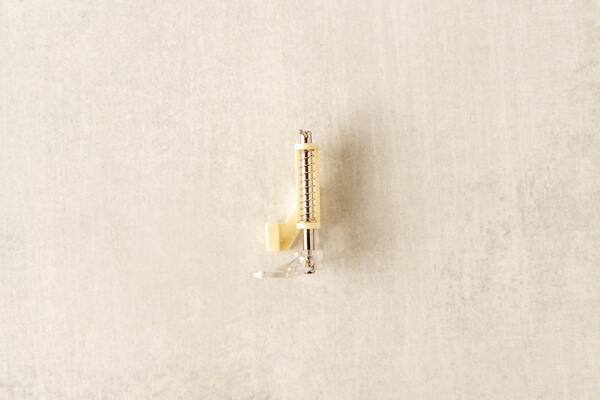
The darning/free-motion foot is used for free form stitching in quilting or embroidery and thread painting. The foot features a spring that makes it easy to sew on fabrics of varying height. The foot is either clear or metal, but clear plastic ones give you better visibility. In order to use this foot on your machine, you will need to lower the feed dogs.
Ruffler Foot
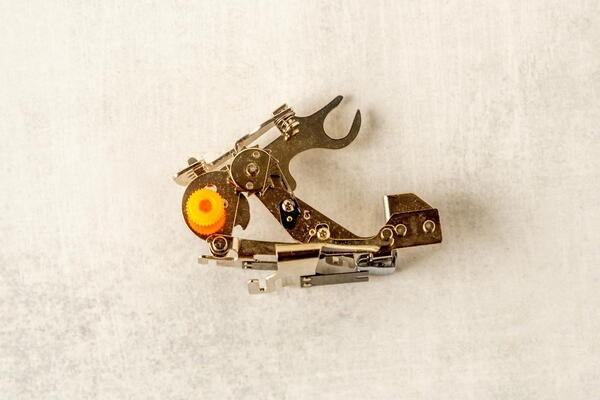
This specialty foot helps make easy ruffles and pleats in varying depths and fullness. The ruffler foot features several adjustments that you can make to vary the look of the pleats, including the size and depth of the pleats. It can be used on lightweight and medium weight fabrics.
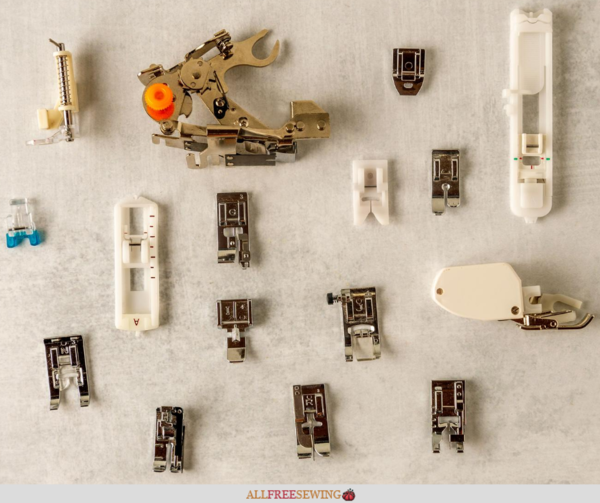
Debbie Wolfe is an author and freelance writer in home, garden, DIY, and lifestyle topics. Debbie has written for leading online media outlets and online retailers, including HGTV, The Home Depot, Walmart, Family Handyman, Realtor, and more. Her book, Do-It-Yourself Garden Projects and Crafts, from Skyhorse Publishing, features a variety of practical DIY projects to beautify your garden and home.
Visit her website!

